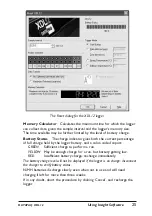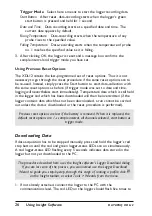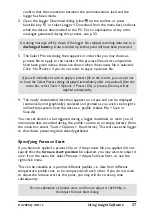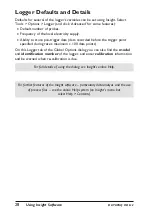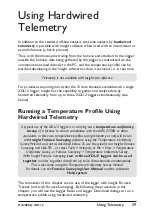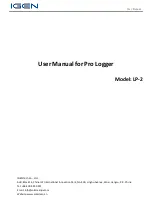
x
Operating Temperature
– Essentially, the higher the ambient
temperature the battery operates in, the shorter will be the life. Batteries
that operate for a large part of the process cycle at relatively low
temperatures will have a longer life than those that operate for the majority
of the process cycle at higher temperatures.
x
Sample Interval
– The shorter the sample interval, the shorter will be the
battery life. This is because power is being consumed each time the logger
takes a reading. A short sample interval will achieve the maximum amount
of information, but this must be balanced against the greater battery charge
required.
x
Programming and Downloading the Data
– When these operations
are carried out it is necessary to connect to the computer via a
communications cable, and power is consumed as soon as the cable is
plugged into the logger. The software warns the user to disconnect from
the PC, but if the logger is left connected this will affect battery life.
Given the factors that can affect the life of a battery it is obviously difficult to
predict accurately, but a fully-charged battery can typically achieve over
60 hours of data-collection using a 30-second sample interval. The LEDs on the
logger will give the best indication of when the battery is low. In the user’s own
conditions, experience will quickly indicate typical battery life, and a log should
be kept for the first few runs, noting sample interval.
Sample Interval No. of Channels Battery Life (hrs)
1 s
12
30
5 s or more
12
60
Charging
Recharge the battery as follows.
1. Plug the charger into the electricity supply.
2. Plug the charger lead into the charger socket on the logger.
A full charge is delivered in about 2 hours. Indication of battery/charging status
is provided by colored LEDs on the logger (see p. XX).
14
Specifications and Operation
DATAPAQ XDL12

























